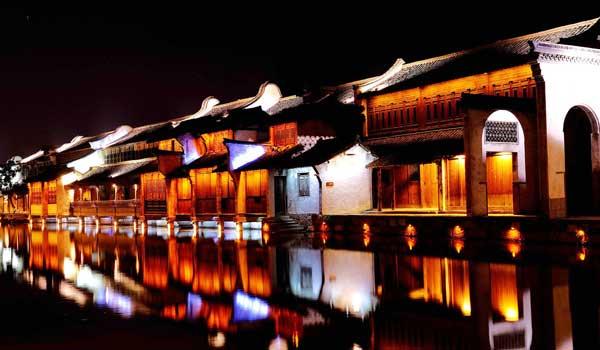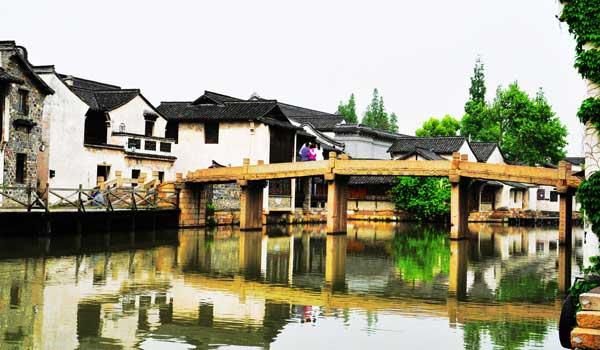Three decades after China and the United States restored their diplomatic ties, the latest reform brings a new stage for the two global economic powers to consolidate the bond.
The past 35 years have seen huge progress in U.S.-China relations. What is now needed is not reconstruction but consolidation, Stephen Orlins, president of National Committee on U.S.-China Relations, said at a forum held over three days in south China's Hainan Province that ended Sunday.
On Dec. 16, 1978, China and the United States simultaneously issued a joint communique to restore diplomatic ties, just a few days before a Communist Party of China (CPC) meeting announced the reform and opening up drive. Thirty-five years later, a new reform blueprint is bringing fresh opportunities for the two to reshape their ties.
"Thirty-five years ago when I was still a little potato, I heard that the U.S. wanted to establish diplomatic ties with China," said Orlins.
With great achievements in past years, it's necessary that the two countries join hands in reducing mistrust and upgrading relations to a new level, he said.
The Third Plenary Session of the 18th CPC Central Committee held last month outlined a range of reforms to steer the economy onto a sustainable path and is set to change China's political and economic landscape over the next decade.
The country stands at a new historical starting point, and the meeting sent the message that China will make changes to the political system, the economy, society, culture and ecology, said Zhang Yansheng, secretary-general of the Academic Committee at National Development and Reform Commission.
"Both China and the U.S. face the task of getting rid of a development mode that exhausts too many resources and coping with challenges of building environmentally sustainable economies," said Zhang.
"How China and the U.S., two of the world's largest economies, cooperate with each other to avoid wrong patterns in the future will deeply affect the world. In this respect, the two countries share common interests and face the same challenge," Zhang added.
China-U.S. ties, which have gone through ups and downs over the past 35 years, are widely seen as the most important relations in the world, even fraught with uncertainty. An important source of the imbalance in China-U.S. relations has been changes in the global landscape and a lack of mutual understanding and trust.
Data showed that China-U.S. trade has grown rapidly in past decades, reaching 485 billion U.S. dollars in 2012 up from 990 million dollars in 1978. The two countries are each other's second-largest trading partners.
Citing that goods worth 1.6 billion U.S. dollars are currently traded between the two countries each day and 800,000 U.S. jobs depend on products and services exported to China, U.S. Ambassador in China Gary Locke said both countries have benefited greatly from the economic integration.
Wang Jisi, president of the Institute of International and Strategic Studies of Peking University, said at a separate forum on Monday that the U.S. has been worrying that the orders and rules it advocates will be challenged, while Chinese enterprises have often complained that they were unfairly shunned from certain sectors when doing business in the United States.
The dangerous trend to exclusive regional pacts sine the 2008 financial crisis has worsened the status of developing countries, brought more uncertainty to economic globalization, and put China-U.S. cooperation to test, according to Zhang.
To promote non-confrontational handling of conflicts and divergence, President Xi Jinping and his U.S. counterpart, Barack Obama, in June agreed on a new type of relations.
Both China and the U.S. face the issue of whether they have an accurate understanding of each other. To accurately understand a rising China and its future direction is very important to the U.S. in terms of formulating effective and pragmatic policies toward China.
Zhang said that the relations between two countries need not be a zero sum game where one country wins at the expense of the other.
"For China and the U.S. to foster a new type of relations, it is important that the two avoid conflict, become more open and further cooperate with each other to make the world economy more inclusive and diverse," Zhang said.
"The future development of China-U.S. relations depends on whether the two can respect each other's core interests, social systems, development process, histories and cultures," Wang said.
As long as China sticks to the development path outlined by the new reform roadmap, it will not pose any threat to the United States, Wang said.
"Will China and the U.S. go their separate ways or head in the same direction? The answer is obvious. Past decades have demonstrated a clear path of China's peaceful development, while U.S. foreign policy has shown a stabilizing trend," Wang said.
"Both China and the U.S. need to show a high degree of political wisdom and clear strategic decisions to achieve a new balance in their relations, which has a direct bearing on regional security and stability in the future," said Zhang Yuyan, chief of the Institute of World Economics and Politics under the Chinese Academy of Social Sciences.
Source: Xinhua








